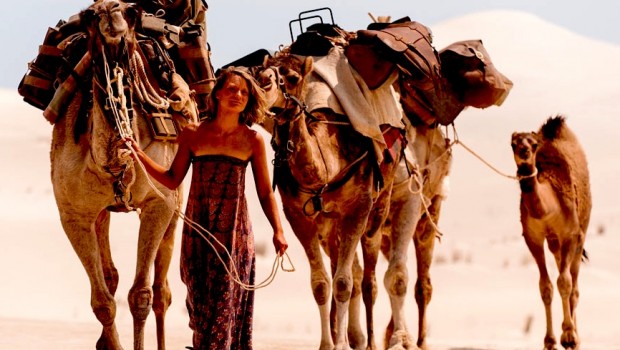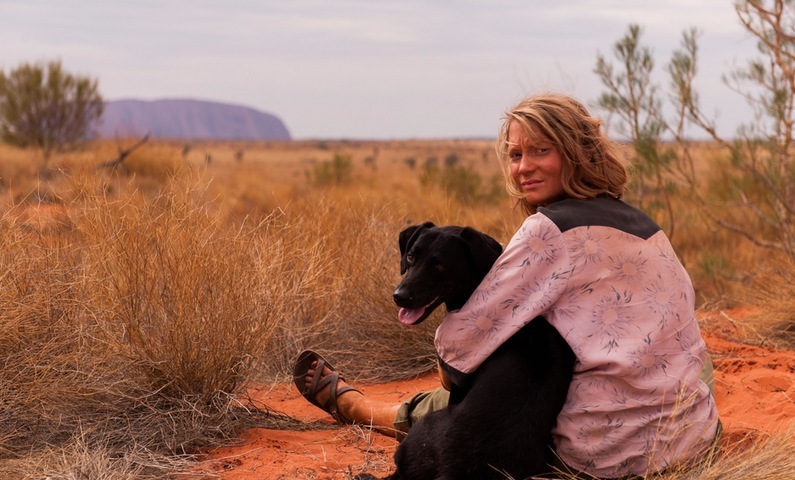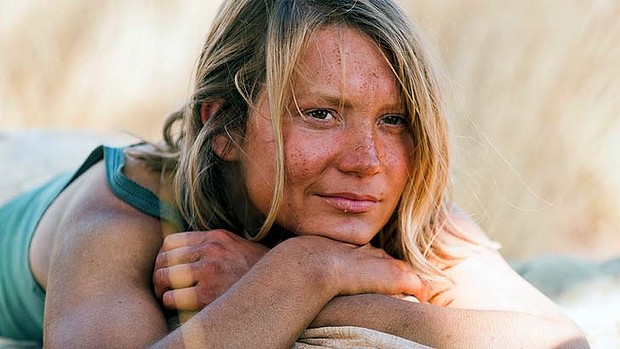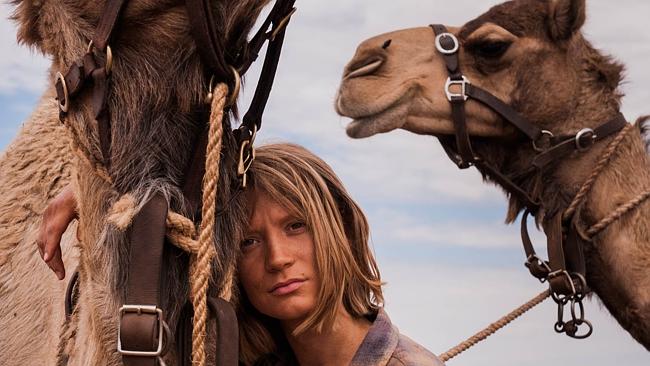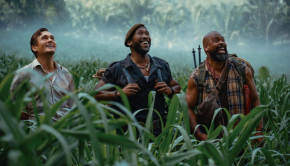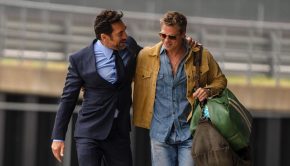Tracks – Film Review
Reviewed by Damien Straker on March 5th, 2014
Transmission Films presents a film by John Curran
Written by Marion Nelson (screenplay), based on Robyn Davidson’s book “Tracks”.
Starring: Mia Wasikowska, Adam Driver and Rolley Mintuma
Running Time: 112 minutes
Rating: M
Release Date: March 6th, 2014
Australian films and filmmakers often possess high attention to detail because they are not bound by genre constrictions that force them to sacrifice realism. Verisimilitude was pivotal in telling Australian Robyn Davidson’s story about her journey across the desert from Alice Springs to the Indian Ocean. This journey in the 1970s is said to have been a 2700km trek. It took Davidson two years of training beforehand to learn how to work with camels. She walked four of them with her, along with her dog Diggity. Davidson was just twenty-seven when making the trip. Two years later, she wrote about her experiences in her book Tracks, from which the film is adapted. She is now sixty-five and has resisted a film version for years, which highlights the importance of the project’s authenticity.
Reading the troubled history of bringing this story to the cinema, it’s apparent as to why she was hesitant. At one point during the early 1990s, the film was going to be an American production developed by Disney and starring Julia Roberts but the deal fell through. Perhaps this is what would later become Roberts’ own star vehicle Eat Pray Love. Tracks now has an American director at its helm but it’s not someone who is foreign to the story or country. Director John Curran (The Painted Veil) was working in Manhattan before he moved to Sydney in the 1980s. He had previously made the Australian film Praise here. He is a strong choice for a film primarily about landscapes and terrain because he studied illustrations and design art at Syracuse University in New York. To prepare for the design of this film he considered the work of Australian artists such as Fred Williams and Sidney Nolan, both of whom focussed on crafting images and paintings of the dry outback landscapes.
The technical elements John Curran has implemented here are the standout. The film is at once strikingly beautiful but also hot, arid and dangerous. It was photographed by cinematographer Mandy Walker (Australia) on location in the South Australian deserts and in the Northern Territory. The landscapes offer a contrast between being both isolating and peaceful but physically damaging. Curran captures this through two cameras, using overhead shots to photograph beautiful sunsets and the tough sand, while moving the frame in tighter to specify images, like the terrible sunburn on the top of Robyn’s shoulders. Davidson herself is said to have a great memory for tiny details that she can recall long after the journey. The film is dedicated, to a fault, to preserving these images. It needed more editing. As glorious as it is to look at, the film is self-indulgent. It lingers over its most beautiful qualities, sometimes at the expense of the narrative, particularly in the saggy final quarter.
First time screenwriter Marion Nelson’s script emphasises facts and characterisation over tight plotting and wins on authenticity. The film’s representation of Robyn Davidson is true. She was said to be bitter, angry and unfriendly, particularly to the American photographer Rick Smolan. He helped convince the National Geographic Magazine to sponsor her journey and it was him to whom she shared a brief romance. She was also reeling from her mother who had hung herself when she was just eleven. The film intercuts flashbacks to Robyn’s home life, presenting the suicide as fragmented, fleeting memories of grief. Robyn Davidson has stressed the journey was about independence and freedom, which is understandable and admirable for a woman in this period. Yet death in the film seems to be as big a motive for Robyn even if it’s not underlined. The story isn’t too dissimilar to the story of Christian McCandless, memorably examined in Sean Penn’s film Into the Wild. Out of an unhappy home life and looking for adulthood and independence, both removed themselves from materialism and social conformity to engage with the wilderness.
After a range of differing Hollywood films Mia Wasikowska shines with a powerful performance, one of her best, playing Robyn as extremely brittle and antisocial. “How do you tell a nice person to go die in a hole?” she says. Both her face and voice work in tangent to stress her emotional fragility, like her desires to be alone, so the character is balanced to make us care. Adam Driver (Girls, Inside Llewyn Davis) as Rick brings an effortlessly funny and likable charm, regardless of his character’s persistence. The inevitability of Robyn’s character development might seem conventional but the episodes are true. She did meet an Aboriginal man named Mr. Eddy (played by his relative Rolley Mintuma) who guided her around the desert. Although she demands to be alone, her reassimilation with people, mostly marginalised Aborigines, presses her into respecting their beliefs instead of her own desires. One example is that she cannot open dead animals because it’s not a set gender role for her according to Aboriginal traditions. I was invested in these vignettes because Mia Wasikowska convincingly embodies Robyn’s angst and growth, even though she takes a while to get there.
Summary: The technical elements John Curran has implemented here are the standout.


